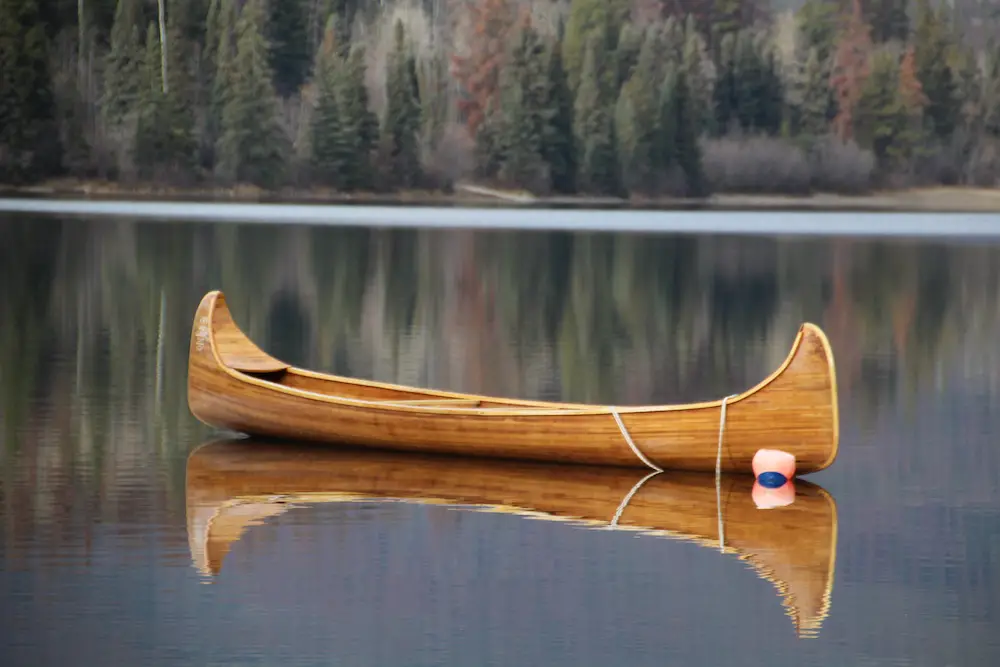Learning how to build a wooden kayak can be challenging, especially if it is your first build.
Thankfully, with professional guides like MyBoatPlans, you can get rid of most of the stress that comes with building something new.
There are over 518 easy-to-follow plans in this intuitive program. Each of the projects helps you to learn the ins and outs of building a custom boat.
How to Build a Wooden Kayak
Because there are many steps to follow when boat building, it will surely be rewarding to take the finished product on the water.
Before you begin, though, it’s essential to consider these beginner-friendly rules to make kayak building a seamless experience.
Rule 1: Choose a Plan From MyBoatPlans
The first thing you will need to do when deciding to build a boat is to find a plan that you’ll want to follow.
Even the most experienced builders refer to their previous designs for inspiration and ideas.
MyBoatPlans is the resource that you need to find over 40 tutorials on boat building. You can also take advantage of the more than 518 plans available that are easy to follow.
For boaters who want a more custom approach, you can easily design your boat with MyBoatPlans, too.
Using CAD software and innovative building guides, you can create a custom craft that meets your specific needs.
When you have the right plan, you can create the outlines for all of your designs on your materials, known as lofting.
The next step would be to put the kayak together so that it is ready to get out on the water.

Rule 2: Decide on Type and Cost
As you begin to browse through the different kayak plans from MyBoatPlans, you’ll find several to consider.
There are two main ways that people build kayaks at-home; they choose either strip-built or stitch and glue.
Apart from the differences in labor, there are also differences in the costs of building your boat.
Choose a method that fits into your daily schedule so that you can stay motivated to finish the project.
You will also want to avoid investing too much money into the kayak, especially if it is your first.
By making a list of the materials you need to gather, you can get a clear idea of pricing. You’ll be responsible for gathering epoxy, fiberglass, forms, and wood, and tools.
You can typically expect stitch and glue kayaks to be a couple of hundred dollars more expensive than strip-built.
Rule 3: Consider Kayak Kits
If you are not particularly interested in building your kayak from custom plans, kayak kits are a great alternative.
As their name suggests, you will pay one inclusive price and receive all of the parts you need. The only things you’ll be responsible for providing are the tools and your time.
Fortunately, there is an abundance of manufacturers that sell kayak kits equipped with all of the essentials.
With that said, even though this method is simpler, it’s not as authentic as sourcing your own plans.
Even by using programs like CAD, you can create a custom kayak that’s the first of its kind.
However, beginners might get overwhelmed with the idea of customizing their kayak without help. If this is the case for you, it might be a great idea to consider buying a kayak kit.
The main point to remember is that they are going to be more expensive than if you designed and sourced a kayak yourself.
Rule 4: Gather the Materials
You can guarantee there are plenty of materials you’ll need to handle the project.
You will need timber for the frame and finishes, as well as fixtures, epoxy, other adhesives, and more.
You will likely have to make more than one trip to the hardware store. Make sure you take the time to make a list of essentials to get you started.
A few of the items to have on your list include:
Tools
- Guards
- Clamps
- Drills
- Drill bits
- Paintbrushes
- Clean cloths
- Sanding blocks
- Mechanical sander (optional)
- Staple gun
Materials
- Sandpaper
- Acetone
- Wood pieces
- Wood strips
- Varnish
- Resin
- Fiberglass
- Epoxy kits
- Seating foam
- Lamination pieces
- Staples
- Masking tape
- Clear tape
Rule 5: Maintain a Clean Workspace
This rule is not only vital for your safety, but it’s also essential for the quality of your kayak.
A clean workspace means there will be less debris that could affect the finishing of your boat. For example, dirt trapped in your epoxy will prevent it from sealing correctly.
It’s a great idea to invest in a shop vacuum. A vacuum will allow you to get rid of extra traces of dust from cutting, drilling, and sanding.
Also, you will find that the cleaner your workspace is, the easier it will be to add finishing touches.
One trick to solve this is to have a separate location for when you’re applying epoxy and varnish.
With this step, you can limit the amount of cleanup you will have to do along the way, so the process is streamlined.
Rule 6: Always Choose Marine Products
Whether you are shopping for epoxy or caulk, you must opt for marine products.
Even though regular household materials could be less expensive, they won’t offer the resilience you need.
The last thing you would want is to spend the time building a kayak to fall victim to rotting and waterlogging.
Typically, if you visit a hardware store, you can find marine-specific products that should be safe. If not, search for items that advertise waterproofing, rather than water resistance.
One of the most important things to keep an eye out for is waterproof varnish or paint.
When finishing your boat with a varnish or paint, you’ll need something to protect the epoxy. Ideally, you shouldn’t have to apply more than three coats.
Rule 7: Get Prepared for Sanding
Even though sanding is essential for making sure your boat has the perfect finish, it’s critical for its integrity, too.
When you take the time to sand down imperfections, you are lessening the chance of water channels developing in the wood.
While applying epoxy, you will want to make sure it gets into every nook and cranny to create a thorough seal.
With all of that said, be prepared to spend the majority of your time sanding both the inside and outside of your kayak.
It might even be tempting to reach for a belt sander to make it go by faster.
However, this could quickly eat through your wood. This point is especially true if you are using cedar, which is known for its softness.
Rule 8: Use Solvents for Cleaning
Just as it’s crucial to maintain a clean workspace, you’ll need to make sure your wood is clean after sanding.
Even by wiping the wood with a tack cloth that seems to pick up most dust, there could be microscopic particles left.
Unfortunately, even a thin layer of sawdust left behind can negatively impact your finishing.
Using solvents, such as acetone, for cleaning the wood is a great way to make sure you get rid of all contaminants.
Also, because acetone is a drying chemical, it will help to remove any traces of wax or oil that could reduce the effectiveness of epoxy.
Final Thoughts
There isn’t a specific guide to knowing how to build a wooden kayak, as the design is in your hands.
By using MyBoatPlans, you can either refer to pre-made easy-to-follow plans or create your very own with quality guidance.
Even if you’ve never considered building a kayak before, this intuitive building guide will make it seem more natural than ever.


You actually make it appear really easy along with your presentation however I find this topic to be really one thing that I
feel I would by no means understand. It kind of feels
too complex and extremely large for me. I’m having a look forward in your next post, I will try
to get the hang of it!
Thank you! That’s really kind of you to say :). And we’ll be looking forward to your next visit!
Hey there! I just wanted to ask if you ever have any problems with hackers?
My last blog (wordpress) was hacked and I ended up losing months of hard work due
to no backup. Do you have any solutions to stop hackers?
Hello and welcome! So far, we haven’t encountered any problems with hackers. But we’ll let you know if we encounter any solutions that can help you 🙂
I truly love your site.. Great colors & theme. Did you create this web
site yourself? Please reply back as I’m hoping to create my own blog
and want to find out where you got this from or exactly what the theme is called.
Thanks!
And we love YOU! Thank you so much for reading our blogs. Our web developers created the theme themselves. Doing so adds more authenticity and personalized touch that is entirely ‘Boat Diaries’ :). But if you want a pre made theme, I’m sure you can easily find one with Google’s help ;). Good luck with your blog!
Wow that was unusual. I just wrote an very long comment but after I clicked submit
my comment didn’t appear. Grrrr… well I’m not writing all that over
again. Anyways, just wanted to say superb blog!
Thank you so much! For writing still despite losing the previous one. We hope you enjoy our future content as well 🙂
I’ve been browsing on-line more than 3 hours lately, yet I by no means
discovered any attention-grabbing article like yours.
It’s pretty worth enough for me. In my view, if all webmasters and bloggers made excellent content as
you did, the web shall be much more helpful than ever before.
Thank you for your kind words! We hope you come back soon for our future posts.
I have been surfing online greater than three hours lately, but I by no means discovered any attention-grabbing article like
yours. It’s beautiful price sufficient for me. In my opinion, if all web owners and bloggers made just right content as you did, the internet
will be much more useful than ever before.
Thank you for your kind words! We hope you come back soon for our future posts.